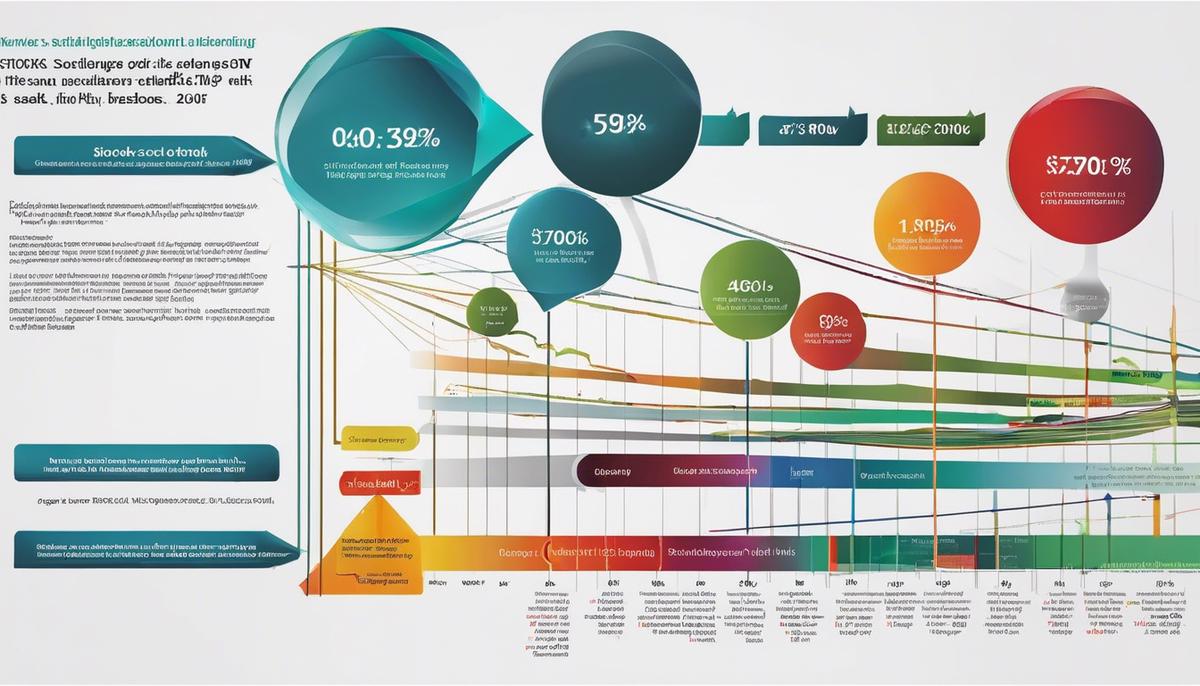Stepping onto the investment landscape requires a comprehensive understanding of its manifold constituents. Among these, two integral components – Common Stocks and Preferred Stocks – form the cornerstone of effective investment strategies. This exploration begins with a deep dive into the nature of Common Stocks, shedding light on their inherent characteristics and the associated risk and potential profits. It further transitions into the study of Preferred Stocks, elucidating their unique features, and the innate advantages they bring over common stocks. In order to lend a holistic perspective, there will be a thorough comparison between these two types of stocks, carving out their distinct places in an investor’s portfolio. The journey concludes with exploring how an intelligent blend of both can mitigate investment risks, and an enlightening discussion on the latest trends in the Stocks market.
1. Understanding Common Stocks
Common Stocks: The Backbone of Modern Economies and a Touchstone for Innovation
In the vast ocean of entrepreneurial endeavours, understanding the significance of common stocks is not merely a choice, it is a necessity. Whether you’re a seasoned business expert or a budding entrepreneur, grasping this fundamental concept lays the groundwork for a thriving investment portfolio.
At its essence, a common stock represents partial ownership in a publicly traded corporation. It provides investors with a claim on the company’s distributed cash flows, typically in the form of dividends. Moreover, it offers voting rights that influence corporate decision-making, which can be vital in steering the company direction.
Now, you may be wondering, “Why all the focus on common stocks?” The truth is, common stocks sit at the heart of the world’s most powerful economies, for several compelling reasons.
- Firstly, common stocks are the driving force behind enterprise growth. By issuing common stocks, companies acquire the much-needed capital for expansion, research, and development. This, in turn, creates job opportunities and bolistically fosters economic growth. The likes of business giants such as Apple, Amazon, or Google, could not have attained their present stature without capital raised from common stocks.
- Secondly, common stocks provide an attractive avenue for investors. With potential for healthy returns, they allow investors to ride on the growth trajectory of successful enterprises. Importantly, they help in diffusing wealth across a broad swath of society, effectively promoting economic equality.
- Finally, in the bigger scheme, common stocks play a crucial role in maintaining market efficiency. Their price fluctuation provides a snapshot of a company’s economic health. This, in concert with other financial indicators, guides policymakers, thereby influencing economic landscapes.
Innovation is the lifeblood of modern enterprises. In essence, companies must innovate or perish. A company’s ability to innovate is often directly proportional to the resources at its disposal. Therefore, by supporting companies through purchasing common stocks, investors indirectly fuel the wellspring of innovation that keep industries forward-moving.
Relating it back to entrepreneurs, it’s clear how well-positioned ones can understand and exploit the potential of common stocks. Whether their intention is to raise capital for the next big idea or strategically invest to magnify profits, a solid command over common stocks is a key arrow in any entrepreneur’s quiver.
In brief, the relevance of common stocks extends well beyond investors and corporations. They are the life-supporting arteries, pulling companies, economies, and entire societies forward into a prosperous future. A comprehensive exploration and understanding of common stocks isn’t just a savvy business move – it’s an acknowledgment of the foundational structure of the modern economic system.

2. Grasping Preferred Stocks
“Preferred Stocks: The Redefined Superiority over Common Stocks”
A new sensation in the business world is the rise of Preferred Stocks, carving out a prestigious place in the heart of investors and entrepreneur visionaries alike. Unlike common stocks, their preferred counterparts ensure investors are bestowed with unique advantages and unobtainable opportunities. So, what sets preferred stocks apart?
The key lies in addressing the undeniable reality: preferred shareholders champion the pecking order during dividend distributions and in cases of a company’s liquidation. While common stockholders find themselves at the mercy of discretionary dividend decisions determined by company performance, investors in the preferred stock category enjoy guaranteed dividends. This attribute emphasizes an essence of a stable source of recurring income, mirroring the appeal of bonds without straying away from the allure of equity investments.
Venturing into range-bound markets or businesses with a low-risk appetite can resort to ‘cumulative preferred stocks’, a jewel of a provision that protects their interest. In circumstances where a company may skip dividend payouts in challenging times, these dividends get accumulated. These accrued dividends must be paid out to preferred stockholders prior to any future dividend distributions to common stockholders.
When it comes to voting rights, preferred stocks often present a mixed bag. Usually, preferred shareholders do not possess voting rights. This may seem at first a disadvantage, however, this lack of voting rights is the shield that protects preferred shareholders from company turbulence and allows them to focus on harvest of steady dividends. Furthermore, certain variations of preferred stocks indeed incorporate voting power, transcending the traditional limitations.
Moreover, preferred stocks exhibit bond-like traits especially visible in interest rate sensitivity. Preferred stock prices are inversely correlated to interest rates, a characteristic more commonly associated with bonds. But it’s worth mentioning that preferred stocks are not as sensitive as bonds to interest rate fluctuations, providing an ideal balance for those willing to straddle the dividing line between equity and debt.
A burgeoning innovation within preferred stocks is convertible preferred stocks. They grant the holder the right to convert their preferred shares into a specified number of common shares, usually anytime after a predetermined date. For an innovative entrepreneur, this provides a sweet spot by combining the best of both worlds – the security and steady revenue of a preferred stock merged with the potential upside that common stocks offer.
To conclude, preferred stocks offer a tantalizing cocktail of benefits that common stocks merely cannot stand up against. They offer a strong income source, priority during payouts and company liquidation, resilience against company instability, and potentially, voting rights and the possibility to convert into common stocks. Understanding the rare opportunities these financial instruments present, opens uncharted territories of investment, making preferred stock an intriguing element within the economic ecosystem.

3. Comparative Analysis of Common and Preferred Stocks
Switching gears to preferred stocks, it’s imperative to understand that their unique advantages position them distinctly within an investment portfolio. Although preferred stocks may initially seem innocuous, particularly in comparison to their common counterparts, their intrinsic value becomes immediately evident in terms of dividend distributions and liquidation priorities.
A key advantage of preferred stocks is their superior placement in the corporate hierarchy. During dividend disbursements and liquidation proceedings, preferred shareholders receive their due before common stockholders. This delivers a level of protection to preferred shareholders, especially when company resources are limited, or in the unfortunate event of bankruptcy.
Next, turn your attention to the aspect of recurring income. Preferred stocks, unlike common stocks, offer a fixed dividend, decreasing the uncertainty of earnings and making them a viable prospect for investors seeking consistent returns. The guarantee of a smooth income stream can be a considerable advantage in unpredictable markets, making preferred stocks a more stable option.
Bringing into discussion cumulative preferred stocks adds another layer to this narrative. Taken a step further than regular preferred stocks, they offer the assurance that if the company skips a dividend payout, those dividends are accumulated and must be paid out before any dividends can be given to common shareholders.
But let’s not overlook one of the key elements distinguishing preferred stocks from common stocks – the absence of voting rights. Unlike common stockholders, preferred shareholders typically don’t have a voice in corporate decision-making. But as is evident, preferred stocks compensate in financial terms.
One of the intriguing attributes of preferred stocks lies in their bond-like behavior. Despite being a form of equity, they’re sensitive to interest rate movements similar to bonds. As rates rise, preferred stocks may decrease in value, and the opposite holds true. This correlation offers a unique diversification avenue within an equity portfolio, reinforcing their strategic relevance.
A notable innovation in the world of preferred stocks is the advent of convertible preferred stocks. These intricate financial instruments allow for conversion into a predefined number of the company’s common stock, thus combining the benefits of both: the stability of preferred stock dividends with the upside potential of common stocks.
To wrap up, the common vs preferred stocks comparison necessitates keen scrutiny. Exploring these equivalences not only taps into the subtleties of investment dynamics but also inspires strategic decision-making that can sharpen the edge in today’s complex, fluctuating global marketplace. Just as an artisan selects the best tools for their craft, savvier investors know the right type of stock to harness, at the right time, can be equally artful.

4. Mitigating Risks: Diversification in Common and Preferred Stocks
It’s clear that both common and preferred stocks hold significant advantages for investors. They each offer unique benefits and possess different risk profiles. The trick for the savvy investor or entrepreneur is to understand how to leverage these assets to their advantage.
For instance, preferred shares, with their stable recurring income and ability to cushion against market volatility, are a safe haven for conservative investors. But they don’t exhibit the dynamic potential for exponential growth as common stocks. Taking risks with common stocks, on the other hand, can lead to enormous profits when a company strikes gold.
One of the best ways to safeguard against potential investment risks is through diversification. A well-diversified portfolio spreads the investment across a mix of common and preferred stocks. This strategy provides a balance between the potential for high returns and low-risk stability.
The process of diversification involves investing in a variety of companies across different sectors and industries. A successful diversification strategy may include a mix of growth and value stocks, small-cap and large-cap companies, domestic and international companies, and various industries with reduced correlation. This reduces the potential risk that would arise from a single company’s predicament or from a slowdown in a particular sector or region.
Investing in both common stocks and preferred stocks effectively spread the risk. It’s understanding the rhythm of the business and economic cycles, introducing defensive stocks during periods of economic contraction and moving towards cyclical stocks during expansion phases.
Crucially, by diversifying across common and preferred stocks, investors gain exposure to the best of both worlds. On one hand, they benefit from the potential high returns and enterprise growth derived from common stocks. In parallel, the dependable income stream from preferred stocks can provide a buffer against stress events within the portfolio.
In essence, mitigating risk lies in the elegance of the diversification strategy. By balancing the different assets – common and preferred stocks – investors can attain a harmony of growth potential, stable income, and downside protection. It’s a process of continuous refinement and balance – an art form that every seasoned investor strives to master.
The takeaway here? Diversification by investing in both common and preferred stocks can be an excellent risk mitigation strategy. And in the unpredictable world of investment, a well-considered strategy can make all the difference between success or loss.

5. Trends and Developments in Common and Preferred Stocks
Let’s delve into the latest trends and developments in the world of common and preferred stocks. The financial world is not stagnant; it morphs regularly to accommodate changes, creating exciting opportunities for savvy entrepreneurs and investors to capitalize on.
The advent of technology in the finance sector has transformed the look and feel of stock markets. Artificial Intelligence (AI) and machine learning have been employed to analyze historical stock prices and forecast future trends. This digital shift has led to the rise of algorithmic trading, which uses computer programs and algorithms to conduct high-speed and high-volume trades, completely transforming the trading industry.
There’s also the growing trend of social investing, influencing the markets like never before. Platforms like Reddit, Twitter, and other social media platforms are being used to rally investors towards specific stocks, often resulting in dramatic, short-term price increases. This new phenomenon, as seen in cases like GameStop, showcases the power of collective action and the evolving role of social media in the market.
Environmental, Social, and Governance (ESG) standards are also becoming a pivotal factor influencing stock decisions. With sustainability becoming more important globally, corporations that prioritize ESG standards often experience a boost in their stock value. To put it in perspective, ESG-focused index funds managed over $250 billion in 2020, which was nearly four times the figure in 2018, according to data from Morningstar.
Preferred stocks, on the other hand, have witnessed a renewed popularity in periods of low-interest rates. These stocks offer comparatively high fixed dividends, making them attractive in a low-yield environment, as investors search for more reliable returns. Here, the focus is on quality – companies with robust balance sheets and sustainable dividend policies.
Participatory preference shares have also been making quite the splash in the stock market. These specialized shares not only receive a fixed dividend but also partake in the additional earnings of the company, providing an opportunity for higher returns. It’s an enticing blend of safety and growth.
Furthermore, the approach towards diversifying investments has evolved with the adoption of exchange-traded funds (ETFs). These instruments allow investors to diversify their portfolios by investing in numerous sectors or industries. The rise of thematic ETFs focusing on technology, renewable energy, and other future-centric areas further paves the way for innovative diversification.
In the ever-evolving landscape of stock markets, understanding the shifting dynamics serves as the key to unlocking promising investment opportunities. Being aware of the latest trends, adapting investment strategies, and cultivating a well-diversified portfolio that balances the potential for growth and stability can significantly bolster financial success. As Warren Buffett rightly put it, “The stock market is a device for transferring money from the impatient to the patient.” So, don’t rush, do your homework, and let the market do the rest.

Ensuring a profitable and risk-controlled investment narrative is about clear understanding and savvy application of available financial tools. The competitive investment landscape pivots on the astute utilization of Common and Preferred Stocks. Navigating the detailed intricacies of these investment avenues can arm a potential investor with immense growth potential. Alongside, acknowledging the need for striking a balance between the two, through strategic diversification, paves the steps towards a robust portfolio. Finally, staying updated with the latest trends and shifts in the stock market equips one with the capability to seize promising opportunities and safeguard one’s resources against potential market downturns. In essence, tying together all these threads is instrumental in script a successful investment journey.



